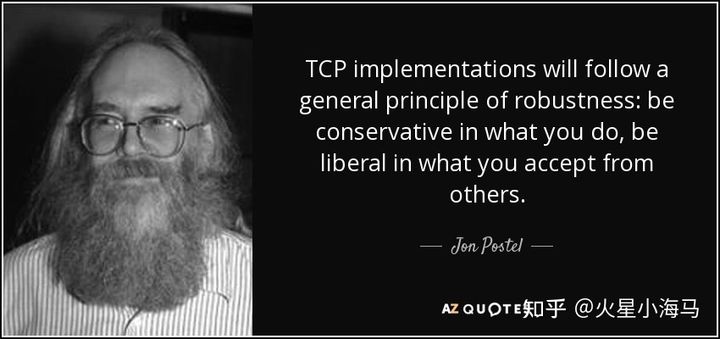前言
前面三章都是Rust的基础和 前提性内容,到了第4章,终于开始涉及Rust语言的核心内容了:类型(Types),泛型(Generics),特性(Traits, 讲真,翻译成特性还是有点问题,时下姑且用之)。
Rust的类型系统是该语言的显著特征之一。在本章中,我们将详细讨论该语言的一些重要方面,如特性、泛型,以及如何使用它们来编写颇具表达力的代码。同时,还将探索一些有助于编写Rust语言风格代码的标准库特性。可以说,这一章非常有料。
我们将涵盖以下主题:
- 类型系统和重要性
- 泛型编程
- 基于特性的增强类型
- 标准库特性探索
- 串烧特性与泛型的高表现力代码
类型系统和及其重要性

为什么编程语言中需要类型?这是一个很好的问题,可以作为理解程序语言类型系统的动机。作为程序开发者,我们知道,计算机程序在其底层就是所谓的0和1组成的二进制编码。事实上,最早的计算机不得不用机器代码手动编程,那真是一个难以想象的时代。最终,当时的程序员们意识到这是非常容易出错、乏味和耗时,而且人脑在二进制层面操纵和推断代码和效果非常不实用。后来,在20世纪50年代,编程界提出了所谓的机器代码助记法(machine code mnemonics),随之变成了我们今天所知道的汇编语言(assembly language)。再之后,现在意义上的程序设计语言出现了,它可以编译成汇编代码,并允许程序员编写人类可读的代码,而计算机也可以很容易的编译成机器代码。然而,由于人类使用的语言可能非常模糊,因此需要设置一套规则和约束,也就是进行日常语言的形式化,目的是来考察,传达和应用:在计算机程序语言中什么是可能的,什么是不可能的。这就是语义(semantics),有基于此,自然引出了类型和类型系统(types and type systems)的概念。

就定义而言,类型是可能值的命名集合(A type is a named set of possible values)。例如,u8只能为0 ~ 255的正整数。类型为我们提供了一种方法,可以弥合低级表征和人们为这些实体所创建的思想模型之间的鸿沟。除此之外,类型还为我们提供了一种方式来表达实体的意图、行为和约束,以此而定义了我们可以用类型做什么,不能用类型做什么。例如,并没有这样的定义:将字符串类型的值添加到数字类型的值中。从类型出发,语言设计人员构建了类型系统,它是一组规则,控制编程语言中不同类型如何相互交互,因而充当了程序推断的工具,并有助于确保我们的程序行为正确,并符合规范。类型系统的限定基于其可表达性,这仅仅意味着使用类型系统,只可以已有的逻辑规范下进行一定程度的语义表达,远远达不到日常语言的灵活度,这方面的提升还要仰仗于语用学的发展和突破。例如,Haskell是一种高级语言,它有一个非常有表现力的类型系统,而C是一种低级语言,提供给我们基于类型的抽象非常之少。Rust则试图在这两个极端之间做一个恰当的平衡。

Rust的类型系统很大程度上受到了函数式语言(functional language)的启发,比如Ocaml和Haskell中的ADTs(Abstract Data Type),影响了Rust中的枚举和结构,而Rust的特性(trait)则类似于Haskell中的类型类(typeclasses),再就是错误处理类型(Option和Result)也是非Rust独创。Rust类型系统的特征突出的是一个强类型系统,这意味着它在编译时执行会更多的类型检查,而不是等在运行时才进行大规模的类型检查。此外,类型系统是静态的(static),比如一个绑定到整数值的变量以后不能更改为指向字符串。可见,这些特性有助于生产健壮的程序代码,而且很少会在运行时影响到常量,但代价就是,在编写程序过程中,需要程序员进行一些相对缜密的计划和思考。一定程度上,可以说Rust要求开发者在设计程序时要考虑再三,这可能会影响一些程序员快速创建原型的节奏。然而,从维护软件系统的长期角度来看,这绝非是一件负面的事情。
除此之外,Rust语言的类型系统对于代码复用,也颇有其独到之处,而这是我们马上就要介绍的内容。
结语
类型系统,在实质上,作为一个有效的媒介,建立起人脑与电脑之间的高效通道,从而使人类的能力通过计算机得到了空前的延伸和增强,而逻辑学,语言学以及其他认知科学,在这其中扮演中基础和提升的角色,而这同时也是程序语言开展进化的一个重要切入点。
主要参考和建议读者进一步阅读的文献
https://doc.rust-lang.org/book
Rust编程之道,2019, 张汉东
The Complete Rust Programming Reference Guide,2019, Rahul Sharma,Vesa Kaihlavirta,Claus Matzinger
Hands-On Data Structures and Algorithms with Rust,2018,Claus Matzinger
Beginning Rust ,2018,Carlo Milanesi
Rust Cookbook,2017,Vigneshwer Dhinakaran





















 535
535











 被折叠的 条评论
为什么被折叠?
被折叠的 条评论
为什么被折叠?








